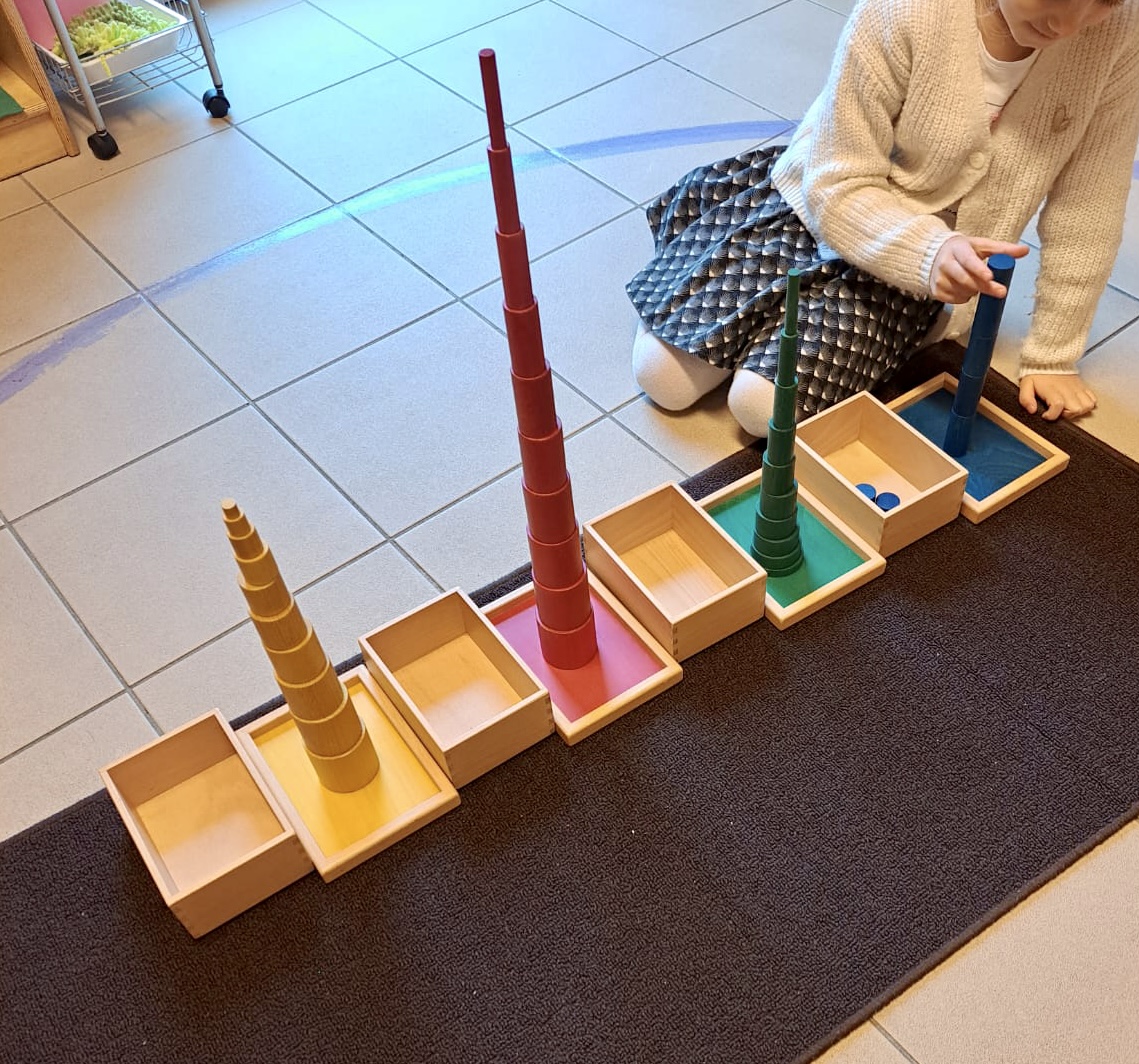
The Montessori method
According to the Montessori method, education is an aid to life; it fosters growth and autonomy with the ultimate goal of helping children reach their potential through respect of self and others.
In her scientific work, Maria Montessori’s starting point was the was the “discovery of the child”, that is the observation of the child’s great potential and needs.
The child is the foundation of the Method:
“…I did nothing other than study the child, and receive and express what he/she gave me, and that has subsequently been called the Montessori Method. In reality I’m a child interpreter…”.
According to the Montessori method, children have an inherent inner drive that directs their development as they interact with people and the environment. The developing mind organizes experiences into learning, which takes the form of guidelines for further exploration and learning.
Natural development in the child does not occur randomly. Rather, it is grounded in the environmental stimuli that delineate and guide it. Therefore, a central role of education, according to the Montessori method, is to provide the environmental stimuli that support and encourage the child’s natural development.
The educational project
Maria Montessori’s vision for education is a personalised process of self-directed learning. The child is actively engaged in a calm, disciplined and confident manner as he or she moves around, observes and explores the environment, choosing freely the experiences that meet her or his genuine needs. The child achieves a sense of accomplishment and satisfaction in an environment of active concentration.
The Montessori method has developed a range of materials and activities to assist children in their learning process. In the Montessori classroom, learning and interactions are self-directed by the child under the supervision of a teacher. Children benefit from freedom within a system of rules that promote a peaceful working environment and respect for each other.
Learning is active and autonomous. Once the child has grasped and mastered ideas and content related to a specific activity, she or he spontaneously moves to the next level. Children learn to evaluate their own learning processes and take an active part in their educational experiences.
The Montessori method seeks harmony and balance between autonomy and authority.
The child’s autonomy and freedom of choice are integrated with teacher-set boundaries, which provide necessary guidance across domains and developmental levels.
Children who attend Montessori school are happy to go to school. They demonstrate an enthusiasm for learning at school and beyond school for the rest of their lives.

